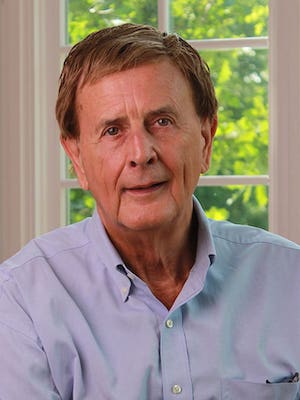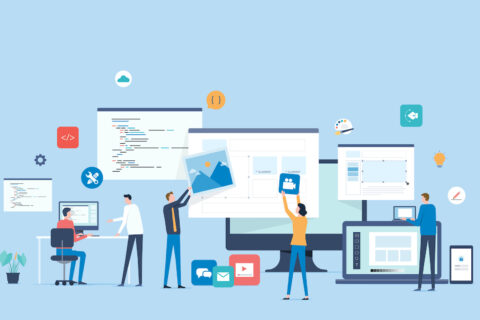Creativity and innovation are essential for success today. Simply put, selling the same products in the same way over a long period of time is a recipe for disaster.

In previous decades, the role of the executive was to improve efficiency and maximize the next quarter’s results. Those goals required routine-based analytical thinking and decision-making. These skills were widely taught in most business and engineering schools and universities and were rewarded and reinforced in most organizations. But while still valuable, an organization’s efficiency is now recognized as only one half of the formula for success in today’s shifting economy. The other half of the success formula demands that organizations develop proactive adaptability skills.
Efficiency means perfecting routines to attain the highest quantity and quality for the lowest possible cost. On the other hand, adaptability means continually and intentionally changing routines and finding new things to do and innovative ways to do current work.
Adaptability means scanning the environment to anticipate new problems, trends, customer needs, and opportunities, and then deliberately changing methods to attain new levels of quantity, quality, and cost — along with new innovative methods, products, and services.
To develop adaptability and build competitive edge, entrepreneurs must expand their thinking to include non-routine based, imaginative creative thinking and problem-solving skills.
The key to adaptability is problem finding. This includes:
- Anticipating new problems, trends, and opportunities (and creating new products and services in advance)
- Proactively seeking new methods and technologies
- Deliberately changing and disrupting routine
- Finding new and better work
- Prompting acceptance of new ideas
- Encouraging acceptance across the whole organization
Problem finding doesn’t come easily to many people. People tend to wait for others to find problems for them to solve rather than take the initiative to seek out or anticipate problems, changes, trends, and opportunities for improvement or innovation. This tendency is, in large part, due to the fact that business people find their desks loaded with problems every day, making it easy for them to be reactive rather than proactive.
In fact, people often avoid important problems that concern customers and other stakeholders. The phrase “That’s not our problem” becomes a second-nature response for them. They also tend to avoid addressing complex or “wicked” problems — that is, messy ones that don’t lend themselves to analytical problem-solving techniques. Even on less daunting but not obviously solvable problems, people often assume prematurely that “it can’t be done” simply because of their unwillingness to challenge conventions or step beyond the boundaries of their current work.
“Creative problem solving encompasses finding problems, developing innovative solutions, and implementing those solutions.”
Creative problem solving encompasses finding problems, developing innovative solutions, and implementing those solutions. Good problem-solving abilities differentiate the persistent companies from the “also ran” in the marketplace. But can problem-finding performance be developed?
In the case of Toshiba, for example, the company places newly hired R&D engineers and scientists into the sales department to begin their careers so they gain awareness that innovation begins with discovering customers’ problems. Later, solutions to those problems become new products. Other top companies in Japan also teach new employees in first-day orientation training sessions that problems are “golden eggs.” They are provided encouragement and simple structures to identify problems as opportunities for improving processes and products. Employees are then encouraged to solve them and implement the solutions themselves.
Corporate entrepreneurs are needed to keep their companies relevant and impactful in their industries. In North America, the 3M Corporation, for example, sets goals for its managers that provoke problem finding. One goal calls for 25 percent of the company’s products to be new every five years. In addition, 3M employees are required to spend 15 percent of their working time exploring new opportunities of personal interest to them.
Further, effective problem solving can be enhanced by assembling cognitively diverse work groups and project teams. Doing so will help address the key functions needed from each team and incorporate varied problem-solving styles needed to generate ideas, create, innovate, strategize, and execute.
Bottom line: Innovation is a process, not an event or an outcome. It’s a process of finding and defining internal and external customer needs, developing solutions to address those needs, and successfully implementing those solutions. Using an effective problem-finding process will help you tackle customer problems other companies avoid — or can’t even find!
Min Basadur is Professor Emeritus of Innovation at McMaster University, Canada, and founder of Basadur Applied Creativity. Michael Goldsby is Stoops Distinguished Professor of Entrepreneurship and Chief Entrepreneurship Officer at Ball State University. Rob Mathews is Executive Director of the Entrepreneurial Leadership Institute at Ball University. Their new book, Design-Centered Entrepreneurship, Second Edition (Routledge, 2022), provides a research-driven, step-by-step approach to creative problem solving. Learn more at elprofile.com.
© YFS Magazine. All Rights Reserved. Copying prohibited. All material is protected by U.S. and international copyright laws. Unauthorized reproduction or distribution of this material is prohibited. Sharing of this material under Attribution-NonCommercial-NoDerivatives 4.0 International terms, listed here, is permitted.














